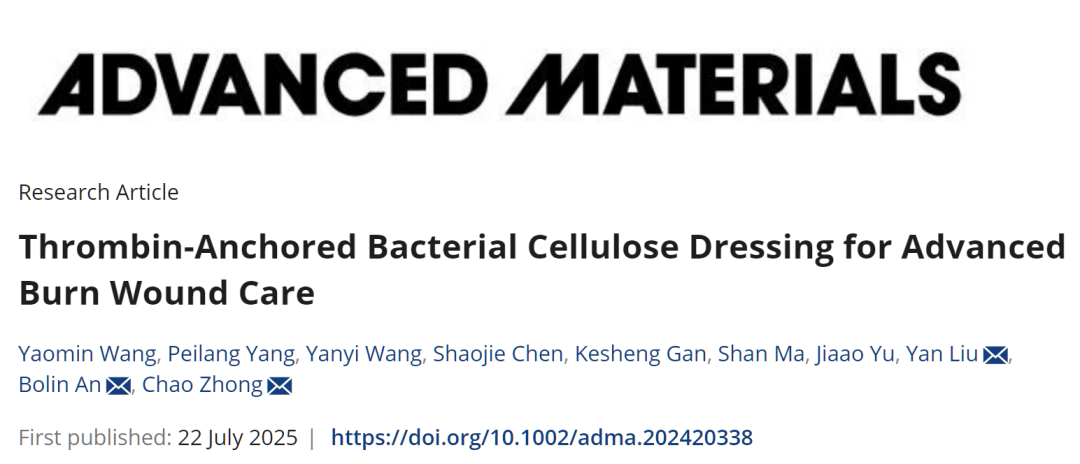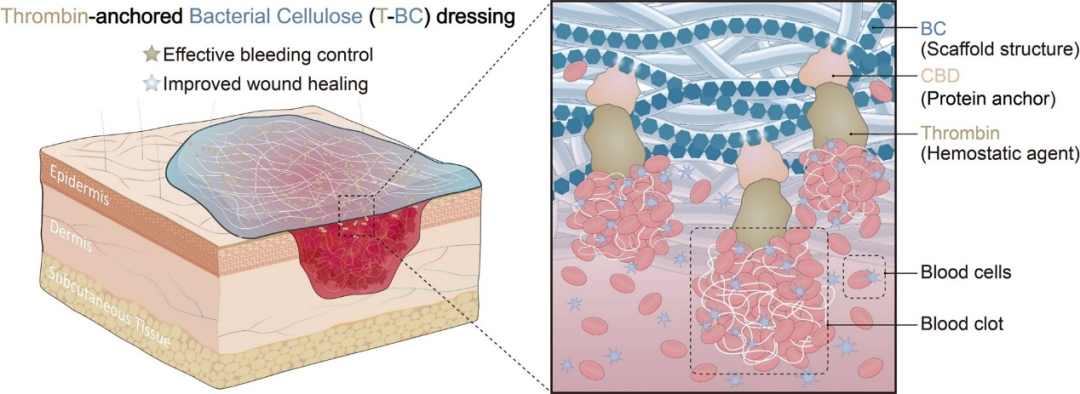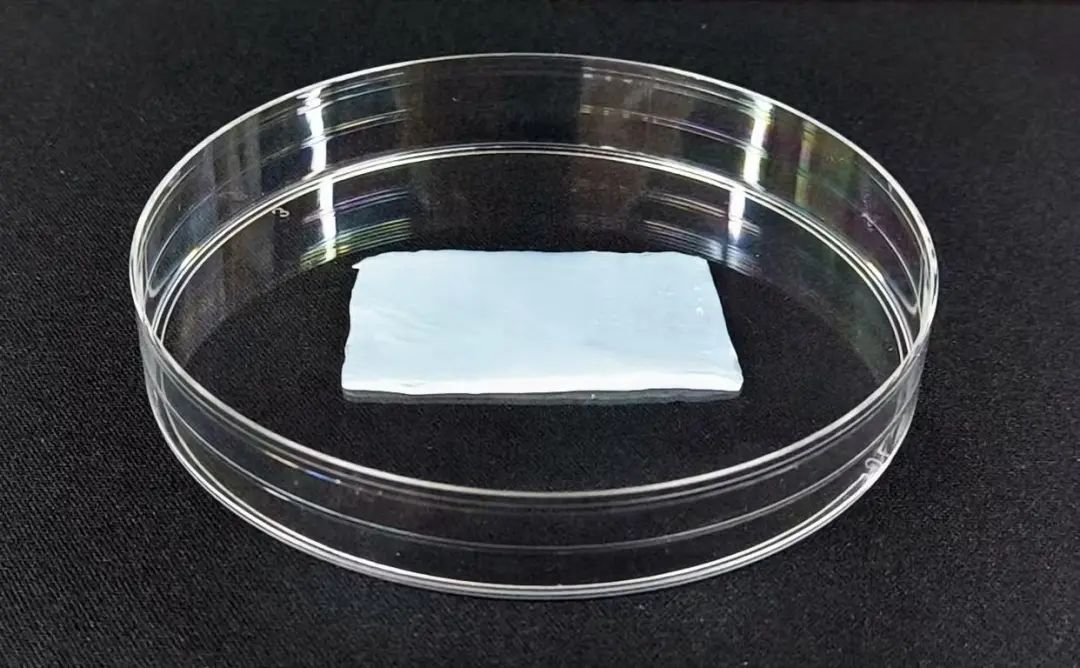Revolutionary New Dressing: 1-Minute Rapid Hemostasis Using Bacterial Cellulose as the Base Material
On July 22, 2025, the team led by Zhong Chao from the Shenzhen Institute of Advanced Technology, Chinese Academy of Sciences, in collaboration with the team led by Liu Yan from Ruijin Hospital Affiliated to Shanghai Jiao Tong University School of Medicine, jointly developed a new type of hemostatic dressing called T-BC based on bacterial cellulose. This innovative material offers a novel solution for the treatment of burns and complex wounds. The research findings were published in the international academic journal Advanced Materials.

Controlling bleeding during clinical burn debridement has always been a challenge. Traditional electrocautery hemostasis poses a risk of thermal damage to surrounding tissues and has low operational efficiency. Commonly used hemostatic agents often lead to re-bleeding during dressing changes, have poor adhesion, and lack sufficient mechanical strength.
The research team employed synthetic biology techniques to precisely bind recombinant human thrombin with a specific cellulose-binding domain (CBD), anchoring it onto a bacterial cellulose (BC) matrix to construct an integrated dressing, T-BC, which possesses both hemostatic and wound-healing functions.
Performance Advantages of T-BC
Rapid Hemostasis: In a rat liver incision model, T-BC dressing can achieve rapid hemostasis within 1 minute, with significantly better hemostatic efficiency compared to traditional materials.
Promoting Healing: In a rat model simulating deep second-degree burn wounds, the wound closure rate in the experimental group treated with T-BC dressing was approximately 40% higher than that of the control group after just 5 days of treatment. Studies have shown that the T-BC dressing significantly accelerates the healing process by promoting neovascularization, regulating the inflammatory response, and reconstructing skin tissue structure through a synergistic triple mechanism. At the molecular level, it achieves multi-faceted regulation of the wound repair process.
High biosafety: The research team conducted comprehensive biosafety evaluations, including cytotoxicity assays, hemolysis tests, and tissue compatibility assessments. The experimental results all confirmed that the T-BC dressing possesses excellent biosafety.
Environmental advantages: This study employs biomolecular self-assembly technology, achieving efficient thrombin immobilization simply through mild protein solution immersion. It eliminates the reliance on organic solvents and harsh reaction conditions associated with traditional chemical crosslinking, thereby offering significant environmental benefits.
The technology is currently in the patent application stage and plans to collaborate with enterprises to accelerate the clinical translation process. This new material can be used not only for burn treatment but also has potential applications in emergency trauma, surgical hemostasis, and chronic wound fields.

The mechanism of action of T-BC dressing in wound treatment.

T-BC auxiliary material samples. (Image provided by the research team)
【Copyright and Disclaimer】The above information is collected and organized by PlastMatch. The copyright belongs to the original author. This article is reprinted for the purpose of providing more information, and it does not imply that PlastMatch endorses the views expressed in the article or guarantees its accuracy. If there are any errors in the source attribution or if your legitimate rights have been infringed, please contact us, and we will promptly correct or remove the content. If other media, websites, or individuals use the aforementioned content, they must clearly indicate the original source and origin of the work and assume legal responsibility on their own.
Most Popular
-

List Released! Mexico Announces 50% Tariff On 1,371 China Product Categories
-

Nissan Cuts Production of New Leaf EV in Half Due to Battery Shortage
-

New Breakthrough in Domestic Adiponitrile! Observing the Rise of China's Nylon Industry Chain from Tianchen Qixiang's Production
-

Dow, Wanhua, Huntsman Intensively Raise Prices! Who Controls the Global MDI Prices?
-

Mexico officially imposes tariffs on 1,400 chinese products, with rates up to 50%






